Cargando...
Recursos educativos
-
Nivel educativo
-
Competencias
-
Tipología
-
Idioma
-
Tipo de medio
-
Tipo de actividad
-
Destinatarios
-
Tipo de audiencia
-
Creador
-
Learn. The different types of respiration - Animal nutrition
EduBook Organización
- 2027 visitas
Diffusion In unicellular organisms, like the amoeba, respiratory gases are exchanged across the whole surface of the body. These gases then cross the cell membranes by diffusion. Tracheal respiration…
-

Relaciona. Relacions entre espècies
EduBook Organización
- 2004 visitas
Relaciona cada frase amb un tipus de relació entre espècies: S'eliminen els organisms de moviments més lents. Els diferents organismes fan servir el mateix recurs nutricional. S'afavoreix el…
-

Final self-evaluation 9.01 - The Plant Kingdom
EduBook Organización
- 1963 visitas
Are the following sentences true or false? Plants are autotrophic, multicellular organisms. The end products of photosynthesis are carbohydrates and carbon dioxide. All plants have vessels for…
-
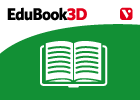
Unit 14: Nature and society: harmony, crisis and impact
EduBook Organización
- 1887 visitas
Acid rain (n): rain that contains harmful chemicals as a result of burning fossil fuels such as coal and oil. aquifer (n): a layer of rock or earth under the ground that contains water. biodiversity…
-

Initial evaluation 5 - The Diversity of Life
EduBook Organización
- 1827 visitas
Match each explanation with the correct term: It is made up of more than one cell. Microscopic component of living things. Round body that controls the activities of the cell. It is made up of only one…
-

Classify. Angiosperms
EduBook Organización
- 1736 visitas
Identify if the following are characteristics of angiosperm plants: They are unicellular organisms. They have vessels for transporting sap. They have rhizoids. They use seeds to reproduce. The seeds are…
-
Biotic factors
EduBook Organización
- 1736 visitas
3.1. Biotic factors Biotic factors are the relationships between living things. They vary according to the organisms involved and are classified as: Intraspecific relationships, where individuals of the…
-
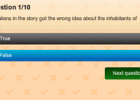
The life of trees
British Council Organización
- 1453 visitas
There are many facts upon trees that we do not know and we can discover in this article, such as trees are the oldest living organisms on earth. After having read it, we can do a true/false…
-

Classify. Living things
EduBook Organización
- 1677 visitas
We classify living things into four main groups. All living things that belong to the same group have some common characteristics. The four main groups are: animals, plants, fungi and unicellular…
-
End-of-unit evaluation - Animal reproduction
EduBook Organización
- 1647 visitas
Reproduction is the only vital function that is not needed to keep an individual alive. It ensures the continuation of the species. Although sexual reproduction is a universal characteristic of animals,…
Te estamos redirigiendo a la ficha del libro...













